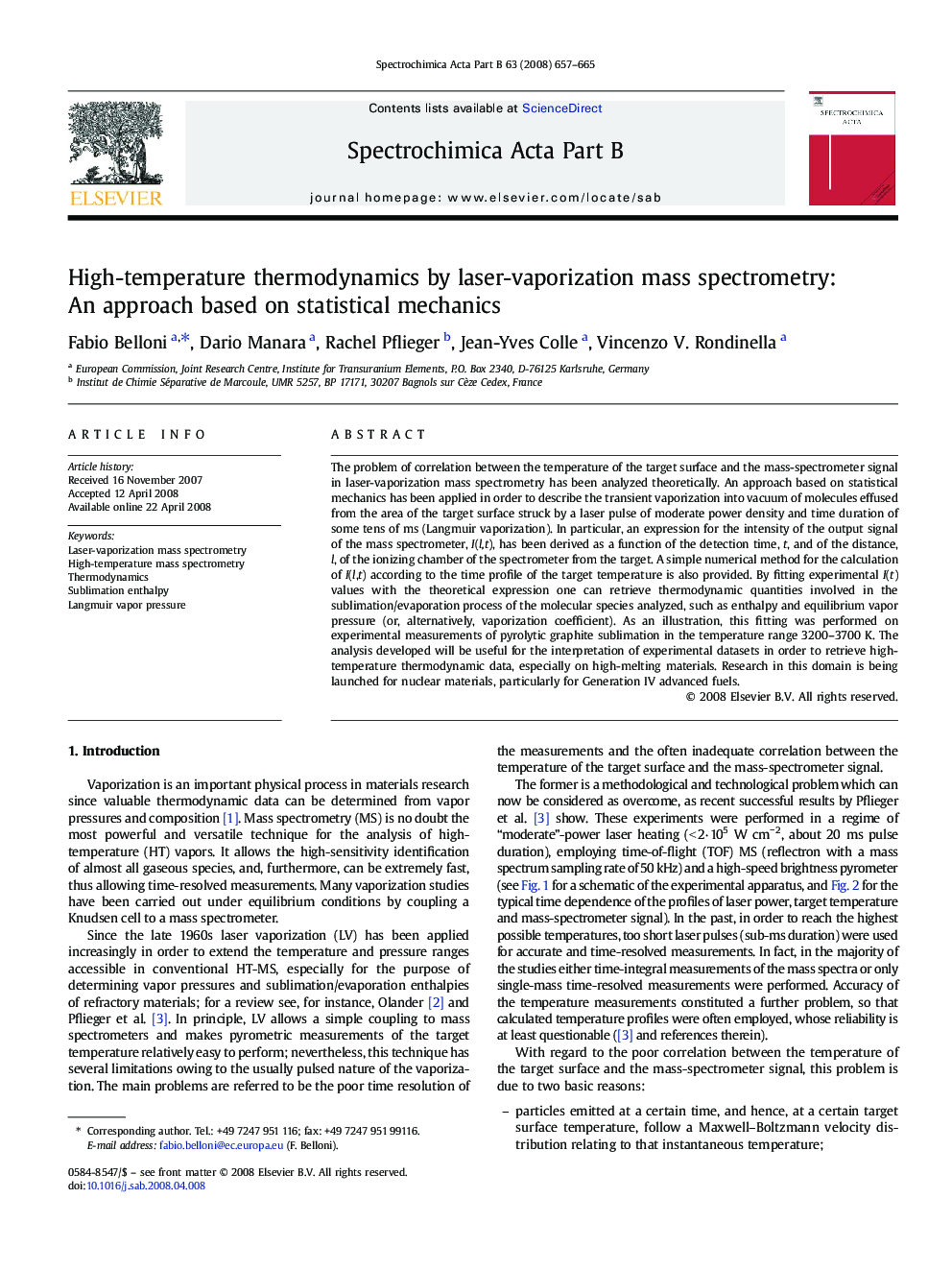| Article ID | Journal | Published Year | Pages | File Type |
|---|---|---|---|---|
| 1240495 | Spectrochimica Acta Part B: Atomic Spectroscopy | 2008 | 9 Pages |
The problem of correlation between the temperature of the target surface and the mass-spectrometer signal in laser-vaporization mass spectrometry has been analyzed theoretically. An approach based on statistical mechanics has been applied in order to describe the transient vaporization into vacuum of molecules effused from the area of the target surface struck by a laser pulse of moderate power density and time duration of some tens of ms (Langmuir vaporization). In particular, an expression for the intensity of the output signal of the mass spectrometer, I(l,t), has been derived as a function of the detection time, t, and of the distance, l, of the ionizing chamber of the spectrometer from the target. A simple numerical method for the calculation of I(l,t) according to the time profile of the target temperature is also provided. By fitting experimental I(t) values with the theoretical expression one can retrieve thermodynamic quantities involved in the sublimation/evaporation process of the molecular species analyzed, such as enthalpy and equilibrium vapor pressure (or, alternatively, vaporization coefficient). As an illustration, this fitting was performed on experimental measurements of pyrolytic graphite sublimation in the temperature range 3200–3700 K. The analysis developed will be useful for the interpretation of experimental datasets in order to retrieve high-temperature thermodynamic data, especially on high-melting materials. Research in this domain is being launched for nuclear materials, particularly for Generation IV advanced fuels.
